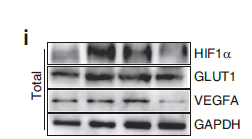
主要信息
Target
KV2.1
Host Species
Rabbit
Reactivity
Human, Mouse, Rat
Applications
WB, ELISA, IHC
MW
96kD (Observed)
Conjugate/Modification
Phospho
货号: YP0472
规格
价格
货期
数量
200μL
¥4,680.00
现货
0
100μL
¥2,800.00
现货
0
50μL
¥1,500.00
现货
0
加入购物车


已收藏


收藏
详细信息
推荐稀释比
WB 1:500-2000; IHC 1:50-300; ELISA 1:2000-20000
组成
Liquid in PBS containing 50% glycerol, 0.5% BSA and 0.02% sodium azide.
特异性
Phospho-KV2.1 (S805) Polyclonal Antibody detects endogenous levels of KV2.1 protein only when phosphorylated at S805.The name of modified sites may be influenced by many factors, such as species (the modified site was not originally found in human samples) and the change of protein sequence (the previous protein sequence is incomplete, and the protein sequence may be prolonged with the development of protein sequencing technology). When naming, we will use the "numbers" in historical reference to keep the sites consistent with the reports. The antibody binds to the following modification sequence (lowercase letters are modification sites):PTsPK
纯化工艺
The antibody was affinity-purified from rabbit antiserum by affinity-chromatography using epitope-specific immunogen.
储存
-15°C to -25°C/1 year(Do not lower than -25°C)
浓度
1 mg/ml
实测条带
96kD
修饰
Phospho
克隆性
Polyclonal
同种型
IgG
相关产品
抗原&靶点信息
免疫原:
The antiserum was produced against synthesized peptide derived from human Kv2.1 around the phosphorylation site of Ser805. AA range:771-820
展开内容
特异性:
Phospho-KV2.1 (S805) Polyclonal Antibody detects endogenous levels of KV2.1 protein only when phosphorylated at S805.The name of modified sites may be influenced by many factors, such as species (the modified site was not originally found in human samples) and the change of protein sequence (the previous protein sequence is incomplete, and the protein sequence may be prolonged with the development of protein sequencing technology). When naming, we will use the "numbers" in historical reference to keep the sites consistent with the reports. The antibody binds to the following modification sequence (lowercase letters are modification sites):PTsPK
展开内容
基因名称:
KCNB1
展开内容
蛋白名称:
Potassium voltage-gated channel subfamily B member 1
展开内容
别名:
KCNB1 ;
Potassium voltage-gated channel subfamily B member 1 ;
Delayed rectifier potassium channel 1 ;
DRK1 ;
h-DRK1 ;
Voltage-gated potassium channel subunit Kv2.1
Potassium voltage-gated channel subfamily B member 1 ;
Delayed rectifier potassium channel 1 ;
DRK1 ;
h-DRK1 ;
Voltage-gated potassium channel subunit Kv2.1
展开内容
背景:
Voltage-gated potassium (Kv) channels represent the most complex class of voltage-gated ion channels from both functional and structural standpoints. Their diverse functions include regulating neurotransmitter release, heart rate, insulin secretion, neuronal excitability, epithelial electrolyte transport, smooth muscle contraction, and cell volume. Four sequence-related potassium channel genes - shaker, shaw, shab, and shal - have been identified in Drosophila, and each has been shown to have human homolog(s). This gene encodes a member of the potassium channel, voltage-gated, shab-related subfamily. This member is a delayed rectifier potassium channel and its activity is modulated by some other family members. [provided by RefSeq, Jul 2008],
展开内容
功能:
Domain:The segment S4 is probably the voltage-sensor and is characterized by a series of positively charged amino acids at every third position.,Domain:The tail may be important in modulation of channel activity and/or targeting of the channel to specific subcellular compartments.,Function:Mediates the voltage-dependent potassium ion permeability of excitable membranes. Channels open or close in response to the voltage difference across the membrane, letting potassium ions pass in accordance with their electrochemical gradient.,PTM:Highly phosphorylated on serine residues in the C-terminal. Differential phosphorylation on a subset of serines allows graded activity-dependent regulation of channel gating. Phosphorylation on Ser-457, Ser-541, Ser-567, Ser-607, Ser-656 and Ser-720 as well as the N-terminal Ser-15 are all regulated by calcineurin-mediated dephosphorylation. Particularly, Ser-607 and Tyr-128 are significant sites of voltage-gated regulation through phosphorylation/ dephosphorylation activities. Tyr-128 can be dephosphorylated by PTPalpha and cyt-PTPepsilon. Phosphorylation levels on Ser-607 are supersensitive to neuronal activity. Phosphorylation on Ser-567 is reduced during postnatal development with low levels at P2 and P5. Levels then increase to reach adult levels by P14. Phosphorylation levels on Ser-564 and Ser-607 are greatly reduced during seizures, by 40% and 85% respectively.,similarity:Belongs to the potassium channel family. B (Shab) subfamily.,subunit:Heteromultimer with KCNG2, KCNG3, KCNG4, KCNS1, KCNS2, KCNS3 and KCNV2.,
展开内容
细胞定位:
Cell membrane . Perikaryon . Cell projection, axon . Cell projection, dendrite . Membrane; Multi-pass membrane protein. Cell junction, synapse, postsynaptic cell membrane . Cell junction, synapse . Cell junction, synapse, synaptosome . Lateral cell membrane . Cell membrane, sarcolemma . Localizes to high-density somatodendritic clusters and non-clustered sites on the surface of neocortical and hippocampal pyramidal neurons in a cortical actin cytoskeleton-dependent manner (PubMed:24477962). Localizes also to high-density clusters in the axon initial segment (AIS), at ankyrin-G-deficient sites, on the surface of neocortical and hippocampal pyramidal neurons (PubMed:24477962). KCNB1-containing AIS clusters localize either in close apposition to smooth endoplasmic reticulum cisternal organelles or with GABA-A receptor-containing synapses of hippocampal and cortical pyramidal neurons, respectively (PubMed:24477962). Localizes to high-density clusters on the cell surface of atrial and ventricular myocytes and at the lateral plasma membrane in epithelial cells. Localizes both to the axial and transverse tubules (T tubule) and sarcolemma in ventricular myocytes. Associated with lipid raft domains. In cortical neurons, apoptotic injuries induce de novo plasma membrane insertion in a SNARE-dependent manner causing an apoptotic potassium current surge. .
展开内容
文献引用({{totalcount}})
货号: YP0472
规格
价格
货期
数量
200μL
¥4,680.00
现货
0
100μL
¥2,800.00
现货
0
50μL
¥1,500.00
现货
0
加入购物车


已收藏


收藏
Recently Viewed Products
Clear allToggle night Mode
{{pinfoXq.title || ''}}
Catalog: {{pinfoXq.catalog || ''}}
Filter:
All
{{item.name}}
{{pinfo.title}}
-{{pinfo.catalog}}
主要信息
Target
{{pinfo.target}}
Reactivity
{{pinfo.react}}
Applications
{{pinfo.applicat}}
Conjugate/Modification
{{pinfo.coupling}}/{{pinfo.modific}}
MW (kDa)
{{pinfo.mwcalc}}
Host Species
{{pinfo.hostspec}}
Isotype
{{pinfo.isotype}}
产品 {{index}}/{{pcount}}
上一个产品
下一个产品
{{pvTitle}}
滚轮缩放图片
{{pvDescr}}






















